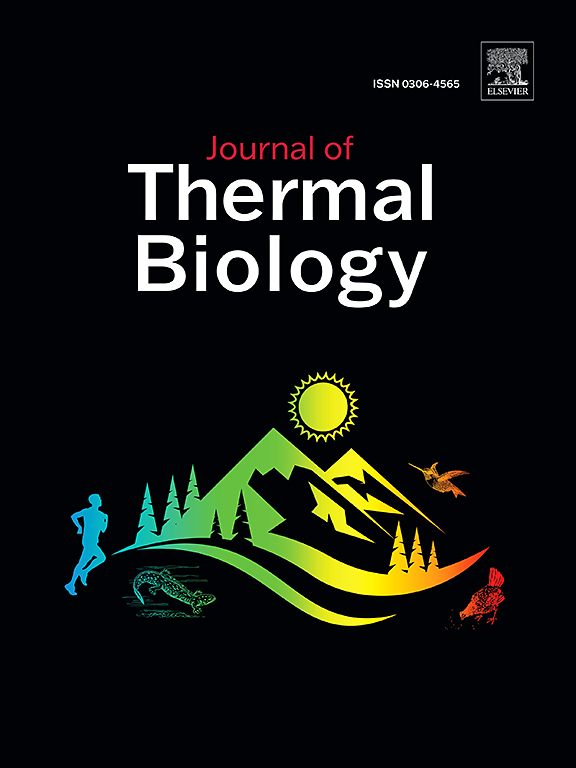冬季极端温和条件对饲养场牛生产率的影响:澳大利亚的视角。
IF 2.9
2区 生物学
Q2 BIOLOGY
引用次数: 0
摘要
在温带气候条件下,冷应激对饲养场牛只影响的研究十分有限。然而,在温带气候条件下,环境温度(TA)、降水量、相对湿度(RH)、风速(WS)和太阳辐射(SR)都会影响表观温度,因此冷应激会影响牛的福利和生产。虽然有许多指数可以量化牛的冷应激,但与牛直接相关并考虑到气候变量之间所有相互作用的指数却很有限。这使得冷应激难以量化,在饲养场中很难获得牛的核心体温和颤抖等牛体测量指标。此外,每头牛会根据其产量、年龄、性别、被毛特征(颜色和类型)、品种和营养状况对寒冷条件做出不同的反应。虽然冷应激难以测量,但冷应激对生产状况、行为和生理的影响已被确定,但一般是在可被视为极端冷应激事件的情况下。同样,虽然已经对遮蔽物、垫料和防风林等缓解策略进行了研究,但有关这些策略在温带气候条件下的作用的信息十分有限。需要进一步开展研究,以全面调查冷应激的影响,以及如何在澳大利亚等地的条件下减轻饲养场牛的这些影响。本文章由计算机程序翻译,如有差异,请以英文原文为准。
Influence of acute mild winter conditions on the productivity of feedlot cattle: An Australian perspective
The impact of cold stress on feedlot cattle has received limited investigation in temperate climates. However, cold stress has been found to impact cattle welfare and production in temperate climatic conditions, where ambient temperature (TA), precipitation, relative humidity (RH), wind speed (WS) and solar radiation (SR) all influencing apparent temperature. While there are many indices to quantify cold stress in cattle, there are limited indices that directly relate to cattle and account for all the interactions between climatic variables. This makes cold stress difficult to quantify, with on-cattle measures such as core body temperature and shivering difficult metrics to obtain in feedlot cattle. Moreover, individual cattle will react differently to cold conditions based on their production, age, sex, coat characteristics (colour and type), breed and nutrition. While cold stress can be difficult to measure, the production status, behavioural and physiological effects of cold stress have been identified, but generally under what could be considered as extreme cold stress events. Similarly, while mitigation strategies such as shelter, bedding and windbreaks have been investigated, limited information is available surrounding their usefulness in temperate climates. Further research is needed to fully investigate the effects of cold stress and how to mitigate those effects in feedlot cattle under conditions, such as those found in Australia.
求助全文
通过发布文献求助,成功后即可免费获取论文全文。
去求助
来源期刊

Journal of thermal biology
生物-动物学
CiteScore
5.30
自引率
7.40%
发文量
196
审稿时长
14.5 weeks
期刊介绍:
The Journal of Thermal Biology publishes articles that advance our knowledge on the ways and mechanisms through which temperature affects man and animals. This includes studies of their responses to these effects and on the ecological consequences. Directly relevant to this theme are:
• The mechanisms of thermal limitation, heat and cold injury, and the resistance of organisms to extremes of temperature
• The mechanisms involved in acclimation, acclimatization and evolutionary adaptation to temperature
• Mechanisms underlying the patterns of hibernation, torpor, dormancy, aestivation and diapause
• Effects of temperature on reproduction and development, growth, ageing and life-span
• Studies on modelling heat transfer between organisms and their environment
• The contributions of temperature to effects of climate change on animal species and man
• Studies of conservation biology and physiology related to temperature
• Behavioural and physiological regulation of body temperature including its pathophysiology and fever
• Medical applications of hypo- and hyperthermia
Article types:
• Original articles
• Review articles
 求助内容:
求助内容: 应助结果提醒方式:
应助结果提醒方式:


